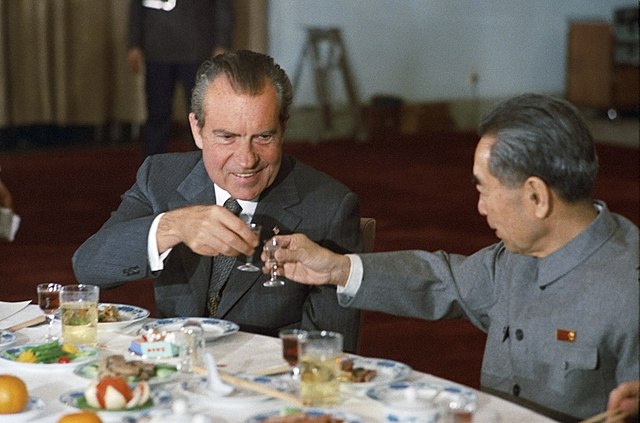by David Parmer / Tokyo
February 28, 1972 marked the end of President Richard M. Nixon’s historic visit to the People’s Republic of China and the date of the issuance of the Shanghai Communiqué. Nixon and his team had been staying at Shanghai’s historic Jin Jiang Hotel. There, together with the Chinese team headed by Premier Zhou Enlai, they had endeavored to come to an agreement that would be acceptable to both parties and also address the key issues facing the United States and the People’s Republic of China.
Two key issues that came out of the agreement that still have relevance are the agreement not to seek hegemony in the region and the acknowledgement by the US of the “One-China” policy. While both powers refrained from seeking hegemony in the region, it is clear that today both countries are active in promoting their interests in the Asia-Pacific region. The One-China policy continues intact today, and one annoyance for Beijing is that Taiwan will not clearly state its position on this issue.
The Shanghai Communiqué was a start in relations between the two Pacific powers, but it was not until January 1, 1979 that full diplomatic relations were established in the Second Communiqué and where the US ended political relations with Taiwan. The final communiqué in this series was the Third Communiqué that was published on August 17, 1982 when both sides agreed to strengthen economic, cultural and scientific ties, and in which the US pledged to decrease arms sales to Taiwan.
The normalization of relations started by the Shanghai Communiqué continues today and in many ways remains the basis for relations between the US and the PRC. Now it may seem strange for two countries to not talk for 30 years, but it was the Shanghai Communiqué that was really the beginning of the end for that silence.
Photo: Nixon Library via Wikipedia
Shanghai Communique full text: https://history.state.gov/historicaldocuments/frus1969-76v17/d203
 日本語
日本語 English
English 中国語
中国語